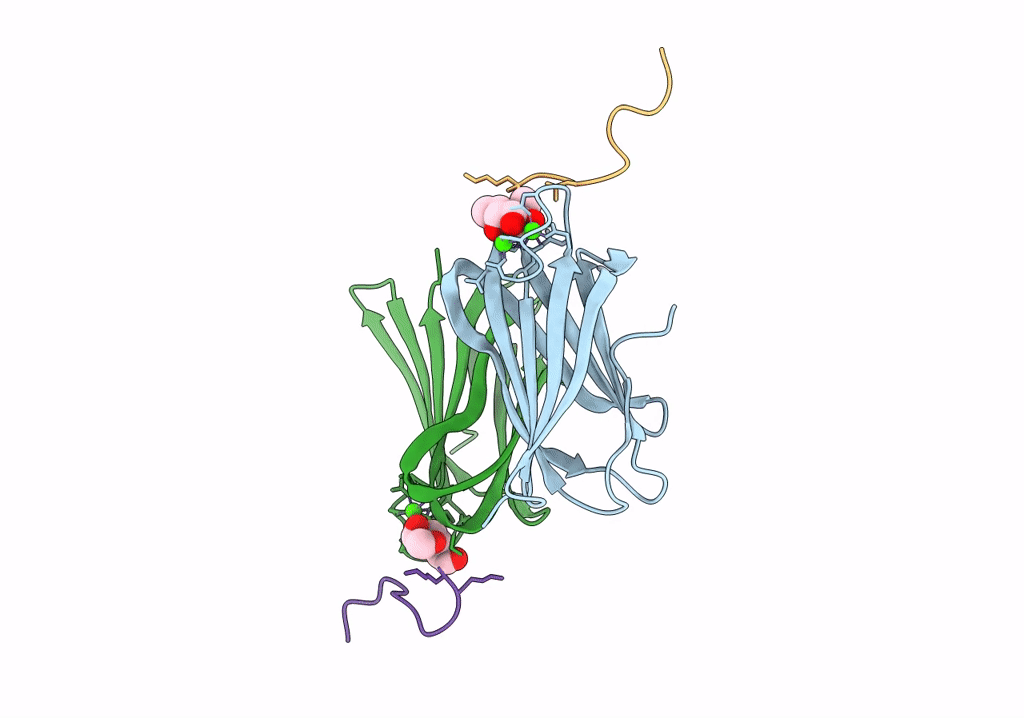
Deposition Date
2022-08-05
Release Date
2023-05-31
Last Version Date
2024-11-06
Entry Detail
PDB ID:
8ANR
Keywords:
Title:
Fucosylated alternate chirality linear peptide FHP30 bound to the fucose binding lectin LecB PA-IIL from Pseudomonas aeruginosa at 1.6 Angstrom resolution.
Biological Source:
Source Organism:
Pseudomonas aeruginosa PAO1 (Taxon ID: 208964)
synthetic construct (Taxon ID: 32630)
synthetic construct (Taxon ID: 32630)
Host Organism:
Method Details:
Experimental Method:
Resolution:
1.62 Å
R-Value Free:
0.18
R-Value Work:
0.14
R-Value Observed:
0.15
Space Group:
P 42 21 2


